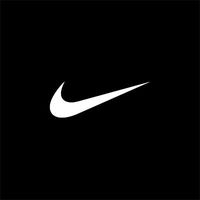Nike's Decision to Discontinue Self-Lacing Sneaker App: Implications for Users and the Future of Smart Footwear
July 7, 2024, 9:35 am

Location: United States, New York
Employees: 51-200
Founded date: 2011
Total raised: $400K
Nike's recent announcement to discontinue the app that controls its self-lacing sneakers has sent shockwaves through the community of tech-savvy footwear enthusiasts. The Adapt app, a crucial tool for adjusting fit, color schemes, and monitoring battery levels, will soon disappear from digital storefronts, leaving users with only physical buttons for basic operations. This move by Nike raises questions about the sustainability of smart clothing in a rapidly evolving technological landscape.
The impending shutdown of the Adapt app marks a significant shift in the way users interact with their self-lacing shoes. For many, the app was not just a convenience but a key feature that enhanced the overall experience of owning and using these futuristic sneakers. With the app gone, users will have to rely on manual controls, stripping away some of the advanced functionalities that set these shoes apart.
Nike's decision to end support for the Adapt app underscores the challenges of maintaining smart clothing products in a market driven by constant innovation and updates. Unlike consumer electronics that are regularly refreshed and replaced, smart apparel like self-lacing shoes can linger in wardrobes for years, even after the companies behind them move on to new technologies.
As users come to terms with the impending loss of app support, the future of self-lacing shoes hangs in the balance. Will other companies step in to fill the void left by Nike's decision? Or will this move signal a broader shift away from app-dependent smart footwear towards more intuitive and user-friendly designs?
Only time will tell how this decision will impact the world of smart footwear, but one thing is clear: the era of the self-lacing sneaker app is coming to an end, leaving users to navigate the brave new world of manual controls and limited functionalities.
The impending shutdown of the Adapt app marks a significant shift in the way users interact with their self-lacing shoes. For many, the app was not just a convenience but a key feature that enhanced the overall experience of owning and using these futuristic sneakers. With the app gone, users will have to rely on manual controls, stripping away some of the advanced functionalities that set these shoes apart.
Nike's decision to end support for the Adapt app underscores the challenges of maintaining smart clothing products in a market driven by constant innovation and updates. Unlike consumer electronics that are regularly refreshed and replaced, smart apparel like self-lacing shoes can linger in wardrobes for years, even after the companies behind them move on to new technologies.
As users come to terms with the impending loss of app support, the future of self-lacing shoes hangs in the balance. Will other companies step in to fill the void left by Nike's decision? Or will this move signal a broader shift away from app-dependent smart footwear towards more intuitive and user-friendly designs?
Only time will tell how this decision will impact the world of smart footwear, but one thing is clear: the era of the self-lacing sneaker app is coming to an end, leaving users to navigate the brave new world of manual controls and limited functionalities.

